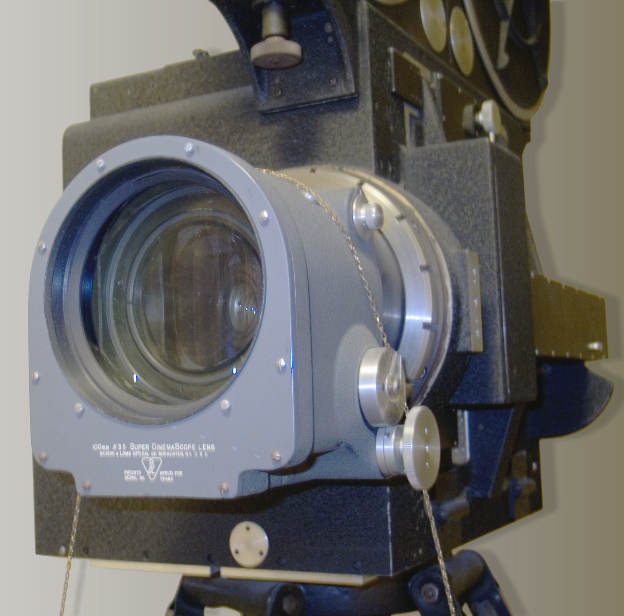
It is not usually possible for all of the equipment to achieve this centreline projection and there is a degree of tolerance with both film and most video projection. It is also important to appreciate that film and most video projectors should be projected from the centre line of the screen. If the location of your projection box is already fixed, you can alter the angle of projection by changing the position of the screen either up and down or backwards and forwards. the picture assumes a trapezoid shape) becomes a problem. At the same time it should not be at too steep angle otherwise keystone distortion (i.e.

#16mm cinescope free#
The environment that film is stored and used in must be clean and free from any dust particles.If you intend to still use traditional film formats as well as digital, the following should be taken into consideration: Other considerations include floor rigidity and loading, cooling for the Xenon arc lamps that are fitted to projectors, general air conditioning, storage, good internet connections and rest areas. There must also be room for the operator to move freely around the equipment. It is important that the projection box is wide, high and deep enough to allow for all of the equipment. If a twin or multi screen is planned it is desirable that projection areas are within one area or linked within the same floor. The projection box is pivotal to the functionality of the venue. It is important that the architect designing the venue pays attention to this area at an early stage in the development. For small venues with seats close to the screen micro perforated material is available. Cinema loudspeakers are usually placed behind the screen therefore most screens are perforated to allow sound penetration. They range from highly reflective, to matt white, to silver for 3D projection. There are a large number of types of screen material available and the type used would depend on the venue. On the one hand this will allow for “true” ratios to be achieved, on the other, the projection backing plates would have to be cut by someone with expert precision to achieve sharp edges to the picture. Some venues project the image onto the screen without using masking. To ensure that true ratios are achieved, especially when more than the two standard ratios are required, variable top and side masking should be used.

It is usual practice that the majority of cinemas will use fixed top and bottom, and variable side masking, to allow for a clean cut image. Most cinemas make provision for showing Cinemascope (1:2.35) and Widescreen (1:1:85) ratios. The prime seat is two thirds of the way back on the centre line of the theatre.

The ideal picture size is that which subtends a horizontal angle of 45 degrees at the prime seat. Usually this would mean that the larger the screen, the further away the front row of seats would have to be from the screen. Attention must be paid however to the principles governing viewing angles. It is usually considered desirable to have a large screen compared to the size of the room. There are a number of “trade offs” when selecting the size of the screen for a venue.


 0 kommentar(er)
0 kommentar(er)
